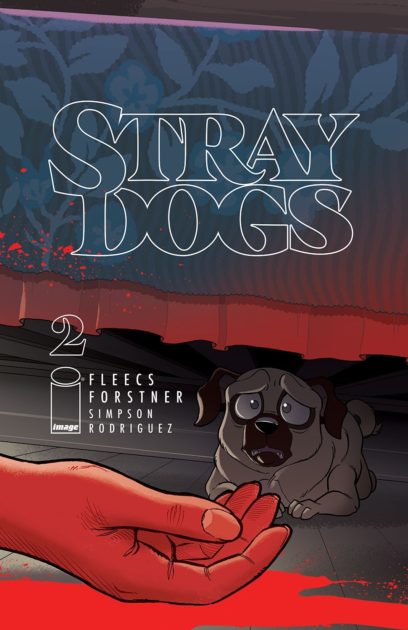What Every Dog Owner Needs To Know

Everybody has got their private opinion with regards to Pets.
Thinking On Getting A Dog? Read These Tips!
When you are trying to find a dog, you may imagine a sweet dog that sleeps right next to you and happily tags along all day. What you end up with may be a different story. That said, you have to train it to be what you want. Read on to learn what else you need to know:
You will pay a lot to take care for your dog. Not only do you have to buy food, but you have to pay their vet bills and purchase other items that they need. You could spend as much as a thousand dollars in one year on your pet! Also, emergency care is a lot if your dog was to ever get sick; you may want to think about pet insurance.
If your young dog is teething and gnawing at everything, buy him a fun chew toy and keep it in the fridge. Not only does this provide him with a good alternative to your furniture, but the cold will help to make his gums feel better. Most younger dogs gnaw out of necessity, not poor manners.
Before deciding on what type of dog to get for your family, consider space. Even though understand what how old is too old to train a dog is may love the bigger dogs that you can really wrap your arms around, you may not have adequate space for a large breed. Take your home and yard size into consideration before bringing home a new pooch.
Try not to give a dog table scraps. You will spoil him and his appetite and set up begging behavior. "People food" can also make dogs sick and contribute to obesity. To prevent temptation, have your dog separated from the area you eat in.

If you do not have any ear cleaner solution on hand, you can use a baby wipe instead. Simply wrap it around the tip of your finger and wipe the inside of the ear's surface. Only go as far as your finger can easily fit. Do not use Q-tips as they can injure the ear.
Keep your dog in good shape. He can suffer with the same weight-related issues that you can, so make sure he gets plenty of healthy exercise and eats a well-balanced diet. Remember that walking will benefit you as well, so make it a part of your daily routine together to be happier and healthier.
If you have a new puppy in the house that suddenly begins chewing things, do not fear. This could be a sign that your puppy is teething. To keep puppy from chewing on your belongings, make sure that you have provided him with plenty of chew toys of his own.
Teach your dog to be trained, even if you don't plan on devoting a lot of time to special tricks. A dog needs to understand the basic hierarchy of the home and should be prepared to listen and learn throughout his life. Practice the basics like "sit" and "down" in the beginning and introduce something new every once in a while.
It is essential that you get your dog vaccinated. Vaccinations will protect your dog from different types of illness and diseases. Most vaccinations are done at your dogs yearly check-up. Your vet can explain what each vaccination is for. The rabies vaccine is required by law in many different states.
If you are in the market for a pure bred pooch, consider checking your local shelter. Pets are abandoned due to a variety of circumstances, so you might be lucky enough to find one at the pound. Simply call the area pound to determine which breeds are available. It could mean you save a dog in the process!
Keep in mind that the pads on a dog's foot are very similar to the skin at the bottom of a human foot. This means that they have a hard time withstanding extreme heat and cold. If you have to take your dog out in extreme weather, make sure that you cover their paws, or you don't have them out for very long.
Don't bathe your dog after you have applied a flea or tick medication. Some medications tout that they are waterproo, but they only mean against rain or swimming. They will largely wash away with a dog shampoo, rendering the treatment ineffective. If you must bathe the dog after a treatment, use a soap free shampoo.
If you are planning on getting a new puppy, plan on investing in some training classes. These classes offer a great opportunity for your puppy to socialize with other dogs and learn basic commands. These classes will provide your new puppy with a great foundation for future training and will help them get a great start in life.
If your dog is prone to getting burs in his coat, keep a can of Crisco in your kitchen cupboard. Next time you notice a bur, put gloves on to protect yourself and work the Crisco around until you can pry the bur out. Give him a nice shampoo to get the shortening out later.
If you are training your dog to not pull when on the leash, you should invest in a quality collar and leash. If you have a larger dog, the force of it pulling might be able to break basic collars and leashes. For this reason a good, strong collar is recommended when you are walking your pup.
Never give your dog away for free, no matter how desperate you might feel to get rid of it quickly. Even if you can not care for the animal, it is still your responsibility to be sure that it will have a good life to come. Instead, take the time to investigate the person that you will give it to and charge a re-homing fee to ensure that they are serious about caring for the animal.
When you bring a new dog home, the first thing you should do is make sure they'll always be able to get back to you. Invest in a safe collar and a tag that contains both your name and phone number. Most lost dogs don't make it home, but with a good tag, you can be sure yours will.
Healthy dogs that are happy are the most fun of all. That is why you need to heed the information presented in this article. You will see that when you really start concentrating on providing the best care for your dog, your dog is a better companion for you and your family.
Working Australian Shepherd vs Show – Which is a Better Choice?
As a newcomer to the Aussie scene, you are sure to be repeatedly confronted with the two terms “working Australian Shepherd” and “show Australian Shepherd”.
What is behind these terms and how do these dogs differ from each other?
Can a newbie train a working Australian Shepherd, or should a family choose a dog from a show line?
Show Australian Shepherd
These dogs are primarily bred for the purpose of achieving the highest possible rating at (beauty) shows. There are such exhibitions in many places and by many associations.
Puppies that do not reach the quality of a future show champion are often offered as easy-to-use family dogs.
At the exhibitions, the dogs are judged in rings, separated according to males and females and different age groups, solely with regard to their beauty and the correctness of their physique.
Character, motivation, performance, health, robustness, and sporting opportunities play a subordinate or no role in the assessment. It’s all about having the most beautiful dog possible in the ring.
Often the show judges prefer dogs with a lot of colors and distinctive markings, a very strong, heavy build, a lot of fur, and with large sizes within the standard.
Since these exhibitions often take place with many people and dogs in a confined space, there are often few opportunities to run around. The dogs often spend a long time in so-called exhibition cages at the exhibition until it is their turn. Dogs with a “chilled” mind is much easier, and it turns out that show line breeders usually breed a type that can be characterized as follows:
They are often more difficult to motivate and sensitive in warm temperatures due to the pronounced coat and strong undercoat. Sometimes actual how old is too old to train a dog have to get a lot of grooming so that the undercoat does not become matted and starts to smell.
Character defects such as fearfulness, insecurity, or aggressiveness can easily be covered up by an experienced exhibitor. Therefore the championship does not guarantee a first-class character.
Working Australian Shepherd
The original Australian Shepherd was and is still a pure working dog who tirelessly helps the ranchers with their work.
He was selected to have a lot of interest in cattle, to be easily trainable, to have a high level of stimulus and drive control, and the desire to work with and please his humans.
This package creates the fascination of the dog. It seems as if he only has eyes for his owner, obeys the slightest word, can do the most incredible tricks, and is successful in every area of dog sport.
But for breeding, the following applies: “If you don’t use it, you lose it”.
This means that characteristics and physical traits that are not constantly requested and checked by the breed as part of a meaningful selection are lost or changed to a form that no longer corresponds to the original characteristics.
Working line dogs were selected solely on the basis of their work performance and robust health, which means that these dogs have comparatively few problems with diseases of the musculoskeletal system such as hip dysplasia, elbow dysplasia, and Osteochondritis dissecans. Epilepsy is also comparatively rare in working Australian Shepherds.
However, since they are not bred with a particular beauty standard in mind, they are often much lighter and smaller in size, have lighter, narrower heads and often significantly less and very easy-to-care-for fur, and are therefore often not as colorful and impressive as their colleagues from the show ring. Upright ears instead of the button ears desired for the show ring also appear from time to time.
https://petsroof.com/working-australian-shepherd-vs-show/
I'm very fascinated by Dogs and I am assuming you enjoyed the new post. Sharing is good. Helping others is fun. Thanks a lot for taking the time to read it.
